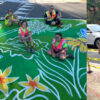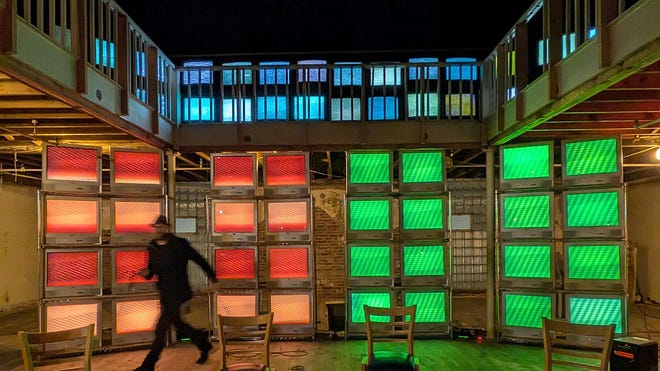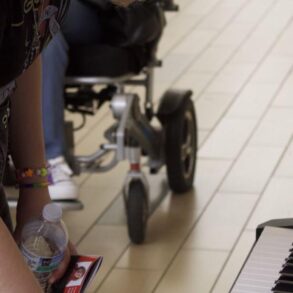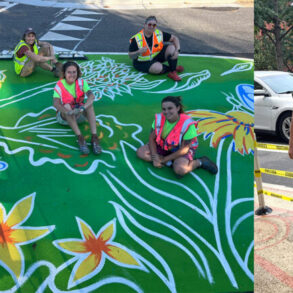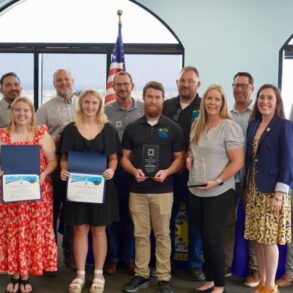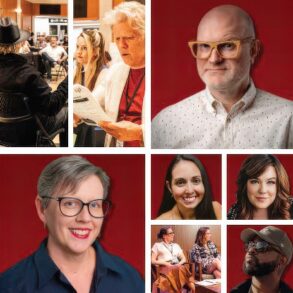Benton Bainbridge used to watch colors spin into words on “The Electric Company,” the 1970s TV show on PBS that taught children to read and write.
“I was inspired by the graphics,” he said.
He grew up to become an artist and found Erie to be supportive in most ways, except for video art. So in 2022, he created a space downtown especially for video, digital and sound artists. Bainbridge is founder and director of FEED Media Art Center, 1307 State St., which he described as a place for people to pursue electronic arts.
He said the letters in the name “FEED” don’t each stand for something, although they are uppercase. Bainbridge said the logo can be read in English and Chinese and the Chinese characters mean an abundance of voices speaking out.
“It’s a signal feed,” he said. “An abundance of us sending out signals.”
Need a break? Play the USA TODAY Daily Crossword Puzzle.
FEED’s website says it “supports the creation, exhibition, preservation, education and innovation of real-time media art” and is “a gallery and arts business incubator with a focus on high-touch creative tech.” Bainbridge said electronic arts sort of fall between traditional art forms like painting and the performing arts.

He said FEED includes a for-profit that holds the real estate and property within and he’s forming a nonprofit to do arts programming, exhibitions and events.
Initially funded by Bainbridge, FEED has also worked with nonprofits and arts projects and received grants, including help from the Simons Foundation for “Eclipsing Stars.” That 2024 immersive project was created by artist Alex “lonesav” Staley and astrophysicist and folklorist Moiya McTier and curated by Liz Slagus, FEED’s director of culture, community & special project. Tied to the April solar eclipse, the project featured seven star-inspired characters leading audiences through a large-scale, multi-chamber, audio-video adventure.

Another installation uses footage filmed more than 100 years ago at a factory near Pittsburgh. Bainbridge said the immersive experience created by artists Jennifer Boles and Stephan Moore features room-size projections that showcase early 20th century workers.
On Feb. 14, Bainbridge planned to launch a new endeavor at FEED called CafeGiant. He said it’s a small café with drinks and snacks and an open stage on which people can share their art.
Erie’s economy is growing slowly:What’s changed in the past 40 years
Bainbridge said there is typically a “modest charge,” maybe $5 to $10, for a show at FEED and admission prices for exhibitions can depend on the funding source.
Besides shows and exhibitions, FEED hosts visiting artists and offers residencies every two months giving artists studio space.
“They can just create in this space whenever they want,” Banbridge said. “It’s a place to freely explore and see if this media is for them.”

He said FEED isn’t only for artists, but is also a place for anyone to create community and dialog, gather for fun and see beautiful and inspiring things.
Bainbridge also said FEED isn’t just about computers and iPads, although it is a place where artists can project a painting onto a wall or create with a tablet rather than a brush. He said the 50,000 square feet of space also holds “old tech” like tube TVs that artists can play with.
Although he doesn’t use artificial intelligence on a regular basis himself, he said he has explored creating with it and FEED has had artists using algorithms to make art.
Like any tool, Bainbridge said, AI has positive and negative aspects.
More to do:The ultimate guide to Erie-area arts and entertainment in early 2025
He said it can give artists a different viewpoint but it can also create effects by using the work of artists who receive no payment for what AI does with their art. He believes there’s been a lack of debate about the potential downsides.
“We have to use these tools well,” he said.
Dana Massing can be reached at dmassing@timesnews.com.
This post was originally published on this site be sure to check out more of their content


